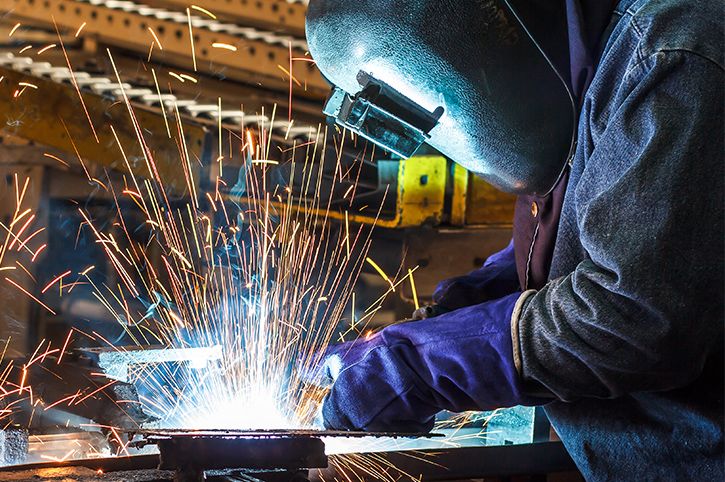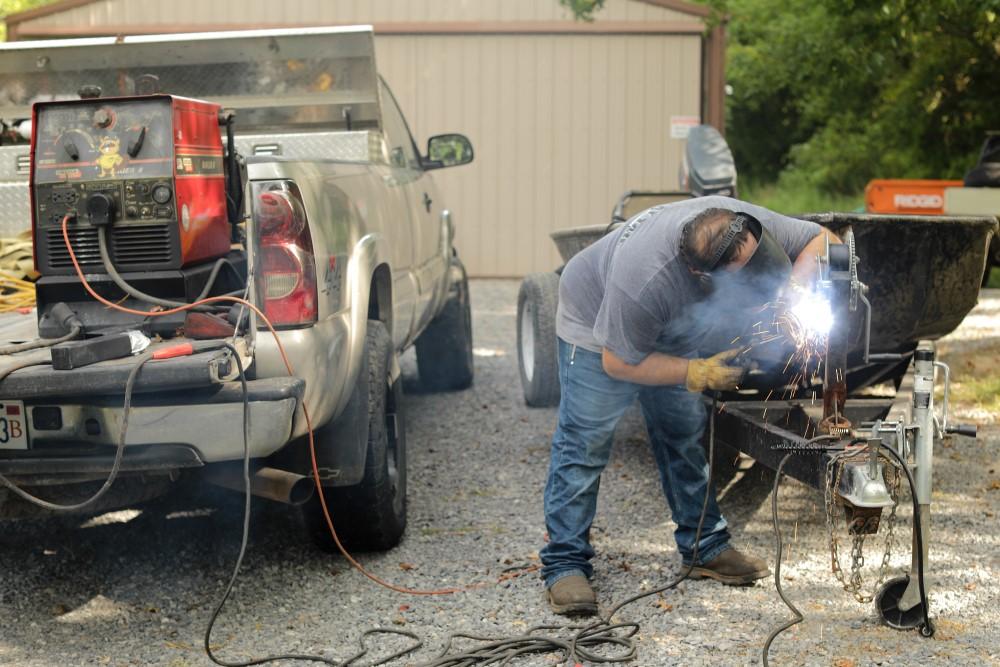Usual Welding Repair Issues and How to Address Them Effectively
Welding repairs typically run into a variety of problems that can endanger the honesty of the end product. Usual problems consist of poor penetration, porosity, and misalignment, among others. Each defect offers distinct obstacles that need particular techniques for resolution. Comprehending these problems is crucial for welders intending to enhance their end results and skills. This conversation will check out these typical welding repair work concerns and efficient methods to address them.
Inadequate Penetration
Insufficient infiltration happens when the weld steel stops working to completely fuse with the base product, causing weak joints and potential structural failings. This problem frequently originates from not enough heat input, incorrect electrode angle, or improper welding rate. Welders may encounter insufficient infiltration as a result of a miscalculation of the needed parameters for a particular material thickness or kind. Furthermore, contamination on the base material's surface can impede efficient bonding, intensifying the problem. To address poor infiltration, welders need to guarantee suitable setups on their devices and preserve a clean work surface area. Routine evaluation of welds is advised to identify any type of shortages early, enabling timely improvements and the avoidance of jeopardized architectural integrity in bonded assemblies.
Porosity
Porosity is a typical issue in welded joints that shows up as small gas bubbles entraped within the weld steel. This issue can jeopardize the stability of the weld, bring about reduced strength and potential failure under tension. Belgrade Welding. Porosity commonly develops from contamination, wetness, or incorrect welding methods, which permit gases to leave into the molten weld swimming pool. To resolve porosity, welders ought to assure appropriate surface area preparation, keep a clean working environment, and utilize ideal welding parameters. Additionally, selecting the right filler material and shielding gas can mitigate gas entrapment. Normal inspection and screening of welds can aid recognize porosity early, ensuring prompt corrective activities are taken, therefore maintaining the quality and integrity of the bonded structure
Imbalance
Misalignment in welding can occur from various elements, including inappropriate configuration and thermal expansion. Recognizing the origin creates is essential for effective resolution. Numerous correction techniques are offered to straighten elements and guarantee structural honesty.
Sources of Imbalance
Welding misalignment often stems from a variety of underlying issues that can endanger structural honesty. One main reason is improper fit-up of components before welding, which can lead to spaces and unequal surface areas. Variations in thermal development during the welding procedure can also lead to distortion, especially if the products being signed up with have various coefficients of expansion. Furthermore, inadequate fixturing and securing may fail to hold elements safely in place, leading to motion during welding. Poorly maintained equipment, consisting of welding equipments and devices, might introduce inconsistencies in the weld bead, further adding to imbalance. Lastly, driver mistake, stemming from inadequate training or experience, can likewise play a considerable duty in creating misaligned welds.
Modification Methods Available
Dealing with misalignment effectively requires a mix of rehabilitative strategies tailored to the particular issues available. One common technique is making use of components or jigs to hold components in the correct setting throughout welding, ensuring consistent positioning. Furthermore, preheating the products can help in reducing distortion and enhance fit-up. For significant misalignment, mechanical realignment methods, such as utilizing hydraulic jacks or clamps, can be utilized to correct the placement before welding. Post-weld warm treatment may also be required to alleviate stresses triggered by misalignment. Cautious inspection and change during the configuration stage can avoid imbalance problems from coming to be considerable problems, promoting a smoother welding procedure and boosting total architectural honesty.
Distortion
Distortion is a common challenge in welding that can develop from different aspects, consisting of irregular cooling and heating. Recognizing the sources of distortion is essential for executing efficient prevention techniques. Resolving this issue not only improves architectural stability however likewise enhances the general top quality of the weld.
Reasons for Distortion
When subjected to the intense heat of welding, materials typically go through modifications that can result in distortion. This sensation primarily emerges from thermal expansion and tightening throughout the welding procedure. As the weld area heats up, the material expands; upon cooling, it contracts, which can develop internal anxieties. In enhancement, unequal heating throughout a work surface can aggravate these stress and anxieties, resulting in warping or flexing. The sort of product additionally plays a substantial duty; steels with varying thermal conductivity and coefficients of expansion might respond in a different way, causing uncertain distortions. Bad joint style and poor fixturing can contribute to misalignment throughout welding, boosting the likelihood of distortion. Comprehending these reasons is crucial for reliable welding repair and pop over to these guys prevention methods.
Prevention Techniques
Reliable prevention methods for distortion throughout welding concentrate on controlling warmth input and making certain proper joint layout. Maintaining a regular heat input aids to lessen thermal development and contraction, which can bring about distortion. Utilizing techniques such as preheating the workpiece can additionally minimize special info the temperature slope, promoting uniform home heating. Additionally, choosing appropriate joint designs, such as T-joints or lap joints, can enhance stability and lower tension focus. Carrying out correct fixturing to protect the work surfaces in area further aids in preserving placement during the welding process. Staggered welding series can disperse heat extra equally, avoiding localized distortion. By applying these techniques, welders can greatly reduce the probability of distortion and improve the overall quality of their welds.
Breaking
Breaking is a typical concern experienced in welding fixings, often arising from various elements such as incorrect air conditioning prices, product selection, or insufficient joint preparation. The incident of splits can greatly jeopardize the honesty of the weld, bring about potential failures during procedure. To resolve this issue, welders must initially assess the source, ensuring that products are suitable and appropriately chosen for the specific application. Additionally, managing the air conditioning rate during the welding process is vital; quick air conditioning can cause tension and cause splitting. Correct joint layout and prep work likewise add to reducing the risk. Implementing these methods can enhance weld high quality and resilience, ultimately lowering the chance of cracking in completed weldments.

Incomplete Fusion
A substantial issue in welding repair services is insufficient blend, which occurs when the weld metal does not adequately bond with the base product or previous weld passes - Belgrade Welding. This defect can bring about weaknesses in the joint, possibly endangering the stability of the bonded structure. Factors adding to insufficient fusion include not enough warm input, incorrect welding technique, and contamination of the surface areas being signed up with. To address this issue effectively, welders ought to assure correct pre-weld cleaning and surface area preparation, as well as readjust their welding specifications to achieve appropriate infiltration and blend. Normal assessment during the welding process can also help determine insufficient fusion early, enabling timely restorative measures to boost the overall top quality of the weld
Overheating
While welding fixings can enhance structural honesty, overheating presents a significant challenge that can cause material degradation. Too much warmth during welding can change the mechanical buildings of steels, resulting in minimized toughness, increased brittleness, and bending. This sensation is specifically crucial in high-stress applications where structural integrity is vital. Identifying getting too hot can involve aesthetic assessments for discoloration or aws d1 3 distortion, as well as keeping track of temperature throughout the welding process. To reduce the dangers connected with overheating, welders need to employ appropriate methods, such as controlling warmth input, changing traveling speed, and using appropriate filler products. In addition, carrying out pre- and post-weld warmth therapies can aid restore material residential properties and enhance the overall top quality of the repair service, making certain long-term performance and safety and security.
Often Asked Concerns
What Are the Typical Indicators of a Welding Issue?

Just How Can I Check My Welds for Quality?
To evaluate welds for quality, one can utilize aesthetic evaluations, ultrasonic screening, and radiographic approaches. Each technique assures structural stability, identifies problems, and validates adherence to specified criteria, inevitably improving the dependability of the welded joints.
What Safety and security Preventative Measures Should I Take While Welding?
When welding, one must prioritize safety by wearing suitable personal protective devices, making certain appropriate ventilation, securing combustible products away, keeping a clean workspace, and recognizing surroundings to stop injuries and accidents.
Can I Repair a Weld Without Renovating the Entire Joint?
Repairing a weld without redoing the whole joint is feasible, depending upon the damage (Montana Mobile Welding and Repair Belgrade Welding). Strategies such as grinding, including filler product, or using a welding procedure can properly resolve details problems while maintaining the surrounding framework
What Tools Are Crucial for Effective Welding Repairs?
Important tools for efficient welding repairs consist of a welding maker, cable brush, grinder, protective equipment, clamps, and filler materials. Each device plays a vital duty in ensuring top quality and safety during the repair work procedure. Porosity commonly develops from contamination, wetness, or incorrect welding techniques, which permit gases to leave into the liquified weld pool. Inadequately maintained equipment, consisting of welding devices and devices, might introduce variances in the weld grain, more adding to misalignment. When subjected to the extreme warm of welding, materials commonly go through changes that can lead to distortion. Splitting is a common concern run into in welding fixings, often resulting from various aspects such as improper cooling rates, material selection, or insufficient joint prep work. A significant concern in welding repairs is incomplete combination, which occurs when the weld steel does not properly bond with the base material or previous weld passes.